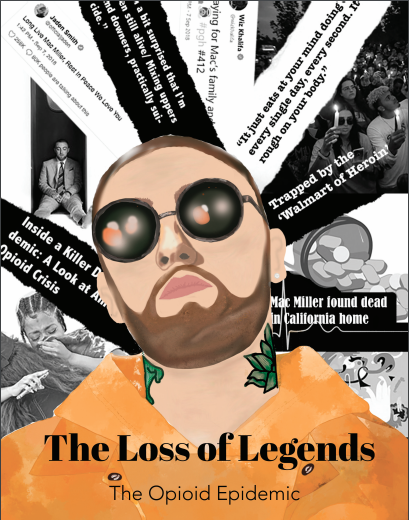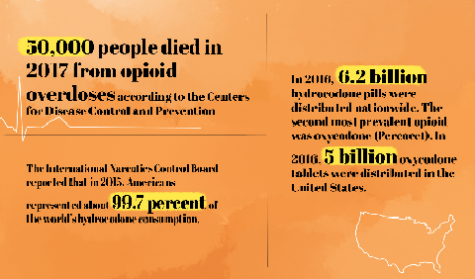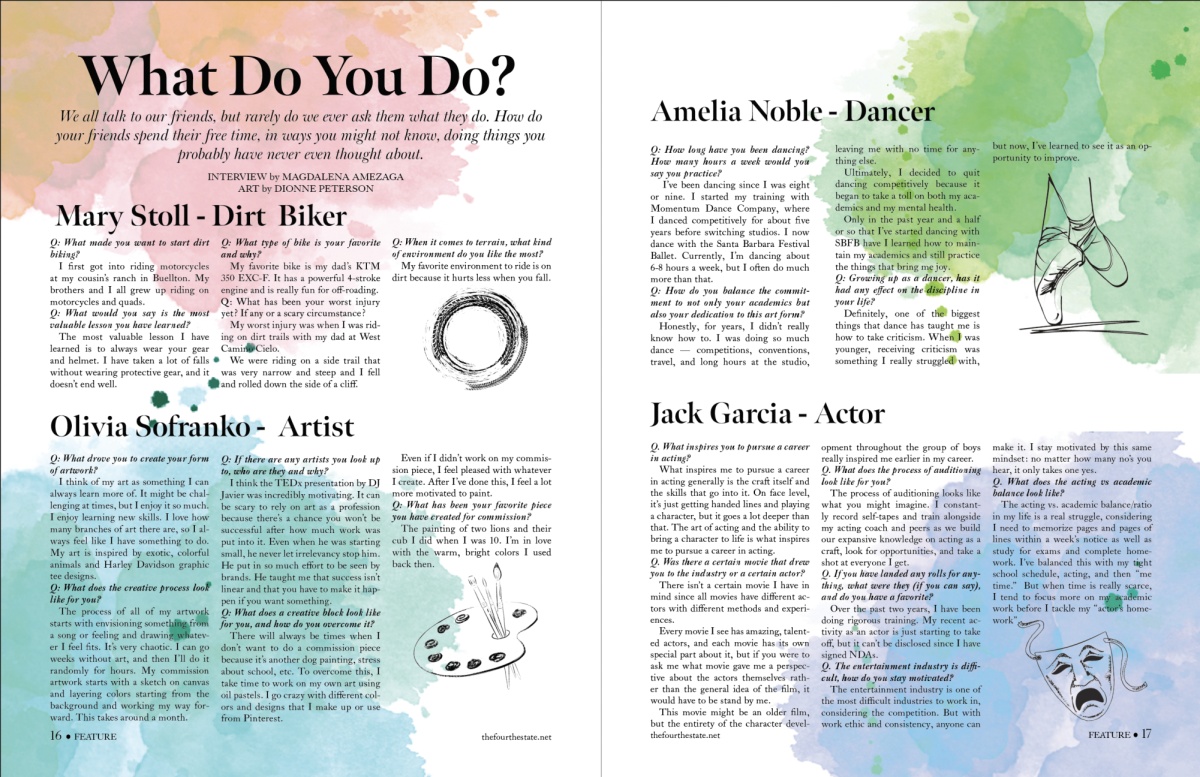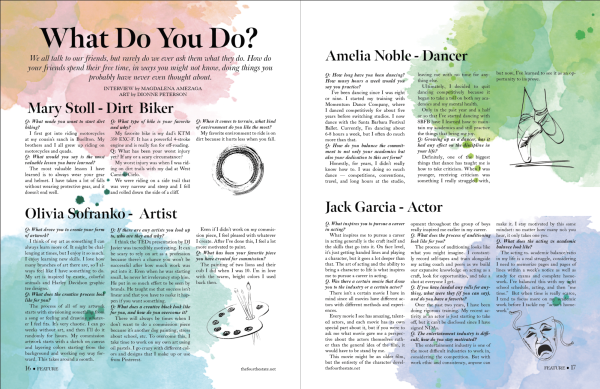Loss of Legends: the Opioid Crisis

December 30, 2018

 “I’m a bit surprised that I’m even still alive. Mixing uppers and downers, practically suicide.”
“I’m a bit surprised that I’m even still alive. Mixing uppers and downers, practically suicide.”
With the recent death of the well-known and beloved artist Mac Miller, the devastating repercussions of opioid abuse are hard to dismiss.
According to the Centers for Disease Control and Prevention (CDC), opioids, a drug responsible for 115 deaths per day (2017), is a medication that is typically prescribed for pain relief.
Opioids relieve chronic pain by activating the reward region of the brain to evoke intense feelings of pleasure. The result of this euphoric high contributes to its mass illicit consumption.
Obtaining the drug is made easier by the growing unmonitored market for synthetic opioids, such as fentanyl online.
In 2017, an investigation started by congressional staffers demonstrated just how little authority the government has towards overseeing illegal drug purchases and shipments across the U.S..
Consequently, restrictions for the U.S. Postal Service were put in place to keep these shipments under control, something that private carriers have been doing for some time.
However, this is not an unprecedented issue. Opioids have been a constant struggle in society, not only reflected in pop culture, but also in minority communities.
The fact that such a significant amount of attention is being given to the epidemic right now can perhaps indicate something about the prejudice present in modern American culture.
On this matter, math teacher Erik Faust said, “Addiction to opioids has been a problem for a long time particularly in poor urban areas, minority neighborhoods, and homosexual communities — but those places were always seen as morally impure and outside of the concerns of the average middle class white Protestant voter.”
As Faust argued, this is not the first time that minority communities have been marginalized by society concerning this particular issue.
The 1986 ‘100-to-1 disparity’ instigated similar questioning towards the bipartisan nature of the justice system.
It stated that the same level of punishment would be given to those who were dealing with 100 grams of powdered cocaine — typically associated with the upper class — as someone dealing with 1 gram of crack cocaine — more commonly located in impoverished communities.
This controversial sentence, established under the Clinton presidency, was transparent in its openly racial discriminatory methods of controlling the crack epidemic that was sweeping the nation.
While the U.S. Sentencing Commission once attempted to eliminate the law, it was not dissolved until 2010.
An indication as to why the white population in America has only recently been severely affected by this crisis can be due to the heightened physician access or insurance.
According to an article published by the US National Library of Medicine titled “Is the Prescription Opioid Epidemic a White Problem,” authors Helena Hansen and Julie Netherland explain how opioids have been disproportionately prescribed to white patients over other minorities.
Concern about the death of white opioid users has opened up the conversation about drug policies and actions that can be taken for the health of the overall public.
Faust adds, “Now that drug abuse is hitting the heart of white middle class America, maybe we’ll actually begin to see addicts as humans and not as caricatures to be reviled and ostracized.”
Drug abuse has been an innate part of youth culture since anyone can remember.
Senior Sam Stegall said that it is “part of the escapist culture that a lot of music and television shows are about these days.”
Throughout generations, artists such as Led Zeppelin, Bob Marley, and, more recently, Mac Miller, have used the medium of music to discuss issues underrepresented in mainstream media.
Drug use remains a theme associated with their lyrics, relating to that escapist fulfillment people tend to seek while listening to music.
At times, this can endorse the habits that the artists themselves are trying to break away from.
On this issue, Mac Miller said in an interview with Complex in 2013, “I was so f-ked up all the time it was bad. My friends couldn’t even look at me the same. I was lost.”
The question remains: is this a part of youth culture that will never subside?
Comparative Religion teacher Al Silva said that this new norm is “just the nature of the beast. Can we change the beast? I don’t know. How do you change a cultural mindset when it’s easily dismissed, like ‘Oh my gosh that will never happen to me.’ That’s the problem.”
The opioid epidemic has become a rapidly growing public crisis with devastating consequences for all members of society.
In response to this crisis, the U.S. Department of Health and Human Services have focused on five ways to prevent future overdoses.
By improving access to treatment and recovery sites, promoting overdose reversal drugs, educating the public, researching pain and addiction, and using pain relief alternatives. The future for opioid alleviation looks optimistic.FINAL OPIOID CRISIS
Instead of rappers glorifying the ‘drug habit[s] like Philip Hoffman [that] will probably put [them] in coffin[s],’ the discussion of these issues will hopefully dissuade people from undergoing the same suffering as their beloved artists who succumbed to their dependence on opioids.














